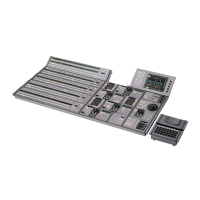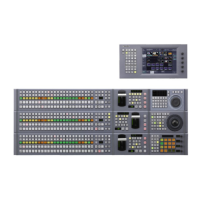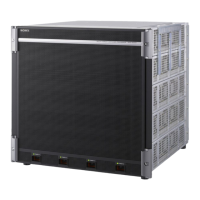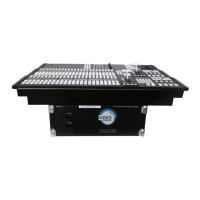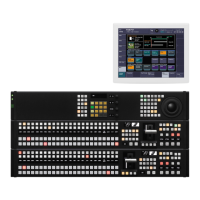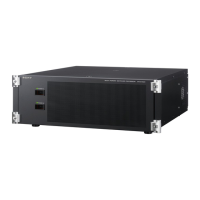Key Adjustments (Menus) 131
2 Adjust the following parameter.
Key Adjustments (Menus)
This section describes key adjustments made by a menu
operation.
You can adjust the following functions by a menu
operation.
•
Chroma Key Adjustment (page 131)
•
Key Edge Modifications (page 134)
•
Masks (page 137)
•
Applying a DME effect to a key (page 139)
•
Specifying the Key Output Destination (page 141)
•
Key Modify Clear (page 141)
•
Blink Function (page 141)
•
Video Processing (page 142)
Chroma Key Adjustments
Methods of adjusting the composite obtained from chroma
keying include automatic adjustment with the auto chroma
key function, and manual adjustment carrying out the
necessary processing separately. The optimum results will
be obtained by first carrying out adjustments with the auto
chroma key function, then making any fine adjustments as
required.
The following manual adjustments are possible.
Key active
When this function is off, only the foreground is output
and you can make adjustments of color cancel (see the next
paragraph).
Color cancel
If the foreground image includes shades of the background
color, turn this function on to remove the color from the
foreground image.
Chroma key window
You can adjust the range over which the key signal is
determined as matching the specified hue. When this
adjustment is off the default ranges are used.
Chroma keying generates a key signal based on a
particular color (reference color) in the foreground
(typically a plain blue background), and the “window”
refers to the range of colors which are regarded as
matching this specified reference color to create the key
signal.
As seen on a vectorscope (that is, in the hue-saturation
color space), the range for this matching corresponds to a
truncated sector. This range is specified by two
parameters: the “Angle” parameter, which determines the
range of the hue parameter, and the “Crop” parameter,
which determines the degree of truncation (see the
following figure).
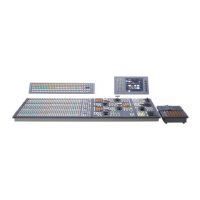
